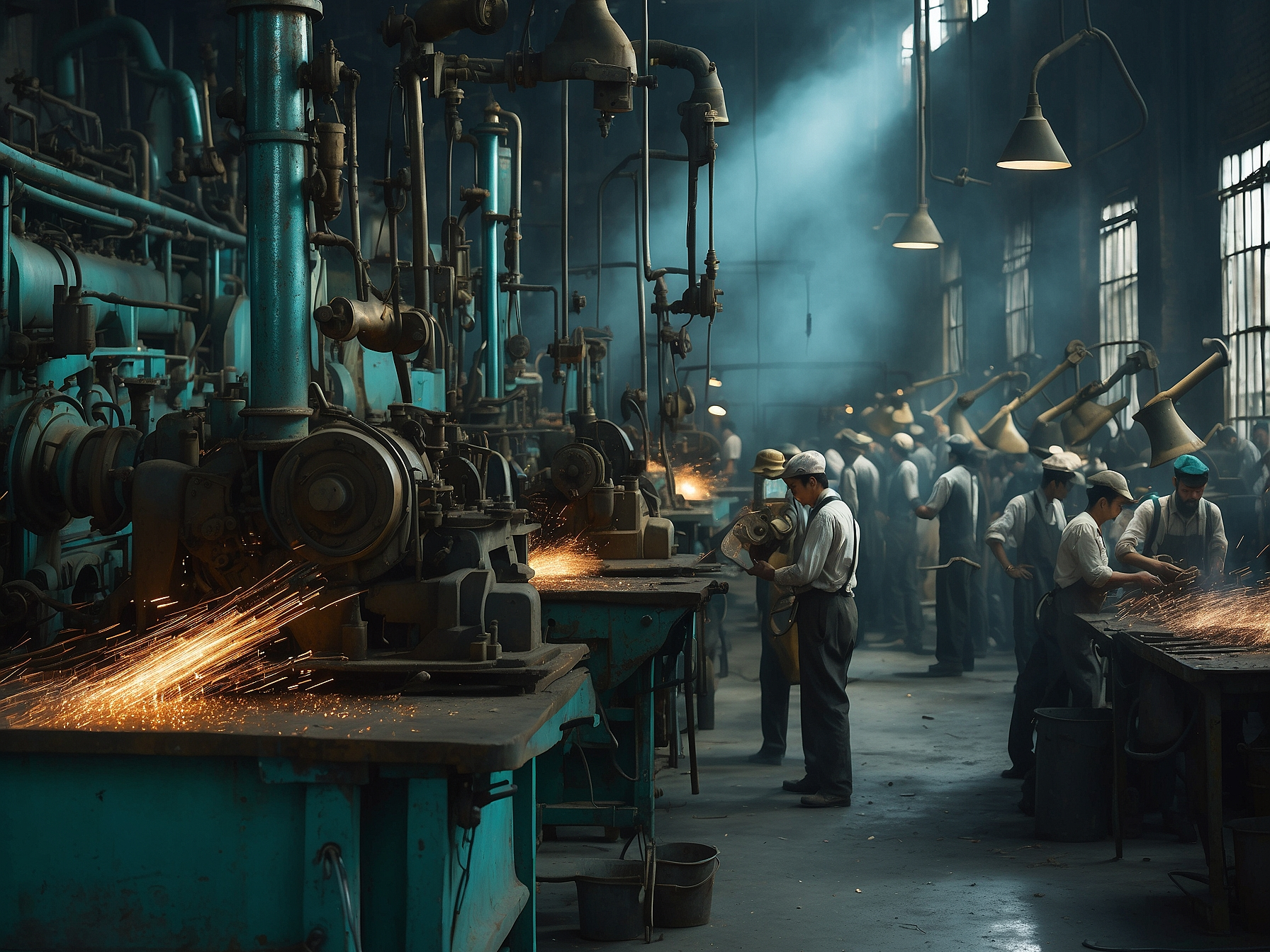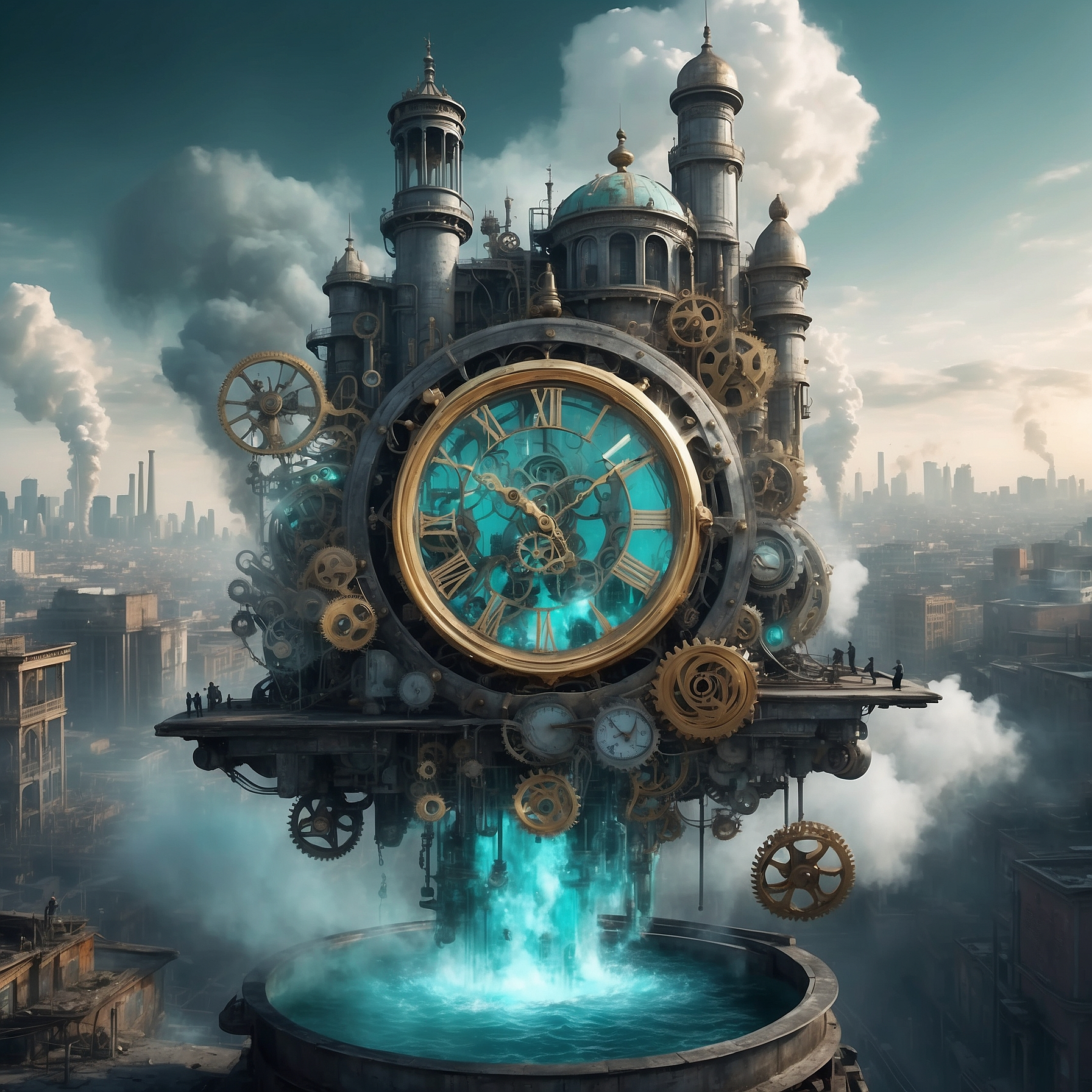Ah, the Industrial Revolution—a time when we swapped our plows and spinning wheels for steam engines and factories. Picture this: it’s the mid-18th century in Great Britain, and folks are trading in their agrarian, handcrafted ways for the dazzling world of industry and machine manufacturing. This period of major innovation and mechanization didn’t just stay put on that rainy island; it spread like wildfire across the globe. Now, let’s be real—the Industrial Revolution had its fair share of drama, bringing both negative and positive effects to society. But today, we’re focusing on the good stuff—the positive impacts of the Industrial Revolution on society.
The Industrial Revolution didn’t just tweak a few things here and there; it completely turned society on its head. Sure, it had its rough patches (looking at you, child labor), but let’s not throw the steam-powered baby out with the bathwater. It also made life easier and spurred improvements in ways our farming ancestors couldn’t have imagined. So, buckle up as we dive into the positive effects of the Industrial Revolution on society.
Related: Capitalism characteristics and features
Let’s rewind for a second. In the Western world, when we talk about industrialization, we’re basically pointing to the Industrial Revolution—that wild ride starting in the late 18th century in Europe and picking up steam (pun intended) in 19th-century America. It was like society traded in its horse-drawn carriages and handcrafted goods for factories packed with complex machinery, rapid transportation developments, endless technological growth, and shiny new energy sources. Goodbye, cottage industries and manual labor; hello, factory life!

Before this industrial shake-up, most folks were getting by as farmers, living in quaint rural communities where the biggest news was whose cow got loose. Then, boom—the 18th century rolls around, and factories start popping up like mushrooms after rain. People ditched the countryside for the bustling urban areas, trading pitchforks for factory shifts. As we shifted from human muscle to mechanical might and moved from homey cottages to noisy factories, society experienced both the negative and positive impacts of the Industrial Revolution on society.
The Industrial Revolution didn’t just change a few things—it flipped society upside down. One of the biggest shifts was moving work from home-based, hand-done cottage industries to large-scale factory production. People packed their bags and moved from sleepy rural towns to bustling cities, chasing those factory jobs like they were golden tickets. Sure, the wages were low and the working conditions were about as pleasant as a coal mine (literally), but it often beat the unpredictable life of farming. Speaking of coal mines, those places were downright dangerous—think cramped spaces and the constant threat of explosions. But hey, at least you weren’t worrying about crop failures!
Let’s not sugarcoat it—factory and mine owners had a whole lot of power and not a lot of concern for worker welfare. Laborers toiled long hours (we’re talking 14-hour days, six days a week) for laughable pay. Complaining about it? Not an option unless you wanted to join the unemployment line. And here’s the kicker: factory owners realized they could pay women and children less than men, so they jumped on that opportunity faster than you can say “unfair labor practices.” Child labor became the norm because it kept production costs low and profits high. The working class lived in poverty while the middle class bosses were swimming in cash. Not exactly the most balanced situation, right?
But hold on a second—it’s not all doom and gloom. The Industrial Revolution also brought about some game-changing innovations that made life easier and more efficient. Take the steam engine, for example. This beast reduced manufacturing times dramatically, cranking out products faster than ever before. More efficient production led to lower prices, opening up markets to new customers. It’s like the 18th-century version of a Black Friday sale—everyone wanted in! This is one of the positive effects of the Industrial Revolution we’re excited to talk about.

In addition, the Industrial Revolution blossomed alongside capitalist economies. Under capitalism, business owners (those savvy capitalists) began organizing labor centrally in factories and introduced the division of labor to boost output and profitability. Compared to the old-school craft and guild systems, capitalist production encouraged innovation and technological change at a breakneck pace. So, let’s dive deeper into these positive impacts of the Industrial Revolution on society.
Check out: Crony Capitalism (Cronyism)
Positive Effects of the Industrial Revolution
- Employment opportunities increased during the Industrial Revolution
- The Industrial Revolution inspired innovation
- Increase in production levels
- Power shifted from businesses to the hands of consumers
- A dramatic change for women
- Improvement in processes for virtually every sector
- Improvement in international trade
- The rise in global economic power

Now, while the middle and upper classes were busy enjoying the fruits of the Industrial Revolution (fancy homes and overflowing wallets, anyone?), the working class was initially left in the dust. But don’t count them out just yet! Workers began forming labor unions in the 1800s, fighting tooth and nail for higher wages and better working conditions. Eventually, they started to see the positive effects of the Industrial Revolution as well. We’re talking increased production of goods, a rise in wealth, and a boost in the standard of living. People gained access to better housing, healthier diets, and cheaper goods. Education also got a leg up during this time. So, let’s break down these positive impacts one by one.
1. Employment Opportunities Increased During the Industrial Revolution
One of the biggest benefits of the Industrial Revolution for workers was the surge in employment opportunities. In Great Britain and the U.S., factories and mines were sprouting up everywhere, and they needed bodies—lots of them. Even though the wages weren’t exactly making anyone rich, factory and mine jobs often paid better than farming. Plus, as more factories opened to meet the skyrocketing demand for mass-produced goods, the need for managers and employees grew. This development made it possible for more people to have jobs, regardless of their family background or education.
Before this era, job options were pretty limited—think family trades, farming, or if you were lucky, a unique talent. The Industrial Revolution changed the world by opening up new ways to earn a living. People could now work in roles that were completely different from anything in the past. So, while the work was tough and the hours were long, the increase in employment was a significant positive impact of the Industrial Revolution on society.
2. The Industrial Revolution Inspired Innovation
If there was ever a time when creativity and invention were off the charts, it was during the Industrial Revolution. This period inspired innovation like never before. The higher levels of motivation and education led to groundbreaking inventions that we’re still using today. Think about it—the calculator, the lightbulb, the X-ray machine, the sewing machine, and even anesthesia all came out of this era. Talk about a glow-up!
Thanks to Louis Pasteur‘s discovery of bacteria and Edward Jenner‘s invention of the smallpox vaccine, healthcare improved dramatically. People began to live longer, healthier lives. These innovations didn’t just make life more comfortable; they fundamentally changed how people lived, worked, and interacted. So, when we talk about the Industrial Revolution’s impact, we can’t ignore the tidal wave of innovation it unleashed.
3. Increase in Production Levels
Before factories were a thing, producing goods was a slow and laborious process. Everything was made by hand, which meant mass production was basically a pipe dream. Enter the Industrial Revolution, and suddenly, production levels soared. Factories allowed groups of people to work together using machines, producing more goods than ever before. This wasn’t just good news for businesses; it also meant consumers had access to products that were previously too expensive or hard to come by.
This leap in production levels is a key part of the Industrial Revolution’s positive effects.
More efficient production methods lowered costs, which in turn reduced prices for consumers. It’s like getting more bang for your buck—a win-win for everyone involved.
4. Power Shifted from Businesses to the Hands of Consumers
Here’s where things get interesting. The increased production levels eventually shifted power away from businesses and into the hands of consumers. How, you ask? Well, with more factories producing similar goods, competition heated up. Consumers suddenly had choices—they could pick from a variety of products rather than settling for whatever was available.
This budding competition led to the development of free market economies, where businesses had to up their game to attract customers. Prices became more competitive, and quality improved. This power shift is one of the often-overlooked positive impacts of the Industrial Revolution on society.
5. A Dramatic Change for Women
The Industrial Revolution’s impact on women’s rights was significant. For the first time, many women entered the workforce, taking on jobs in factories and mines. While they were often paid less than men (not cool, we know), this shift allowed women to gain economic independence. It was a stepping stone toward greater social and political rights.
Women began leading reforms to change discriminatory practices. They became more involved in politics, advocating for suffrage—the right to vote. By 1918, Great Britain granted voting rights to women over 30, and the United States followed suit in 1920 with the passing of the 19th Amendment. This dramatic change is one of the positive effects of the Industrial Revolution that reshaped society.
6. Improvement in Processes for Virtually Every Sector
The Industrial Revolution didn’t just affect factories; it improved processes across the board. Clothing became more durable and affordable, transportation evolved from horse-drawn carriages to steam-powered trains and ships, and food production became more efficient. Buildings became taller and sturdier, thanks to advances in construction techniques.
Even city planning saw improvements. As people flocked to urban areas for work, overcrowding became an issue. This led to significant advancements in how cities were designed and managed. All these enhancements contributed to better quality of life, highlighting the positive impacts of the Industrial Revolution on society.
7. Improvement in International Trade
Before the Industrial Revolution, international trade was a complicated and costly affair. Transporting goods over long distances was slow and expensive, limiting commerce to national borders at best. However, with advances in transportation like steamships and railways, international trade became more viable.
Businesses expanded their reach, and consumers gained access to a variety of foreign goods. This improvement in international trade is a significant Industrial Revolution impact on economic growth, fostering global connections and economic expansion.
8. The Rise in Global Economic Power
The United States’ rise as a global economic powerhouse is a testament to the positive effects of the Industrial Revolution. The nation’s economy strengthened due to increased domestic and foreign trade opportunities. This economic boost encouraged the U.S. government to become more involved in international relations, expanding its influence on the global stage.
This shift wasn’t just about money; it was also about political power. The expansion of the American economy had international repercussions, such as the opening of relations with Japan and rapid territorial growth. The Industrial Revolution changed the world by altering the balance of global power.
See also: Mercantilism vs Capitalism: Differences and Similarities
Takeaways
In conclusion, ever since the 1800s, people have debated whether the Industrial Revolution’s effects were a blessing or a curse. The reality is a bit of both. While the early industrial age brought terrible hardships for workers—think long hours, low pay, and unsafe conditions—reforms eventually improved the situation. Labor unions won the right to bargain for better wages, reasonable working hours, and safer conditions. Over time, workers began to reap the benefits of the Industrial Revolution as well.
Despite the social problems it created, the Industrial Revolution ushered in advancements that fundamentally improved society. From technological innovations to economic growth, its positive impacts on society continue to be felt today. So, the next time you’re enjoying a product that was mass-produced or marveling at modern technology, remember—you have the Industrial Revolution to thank for that!
